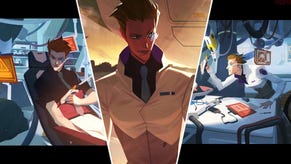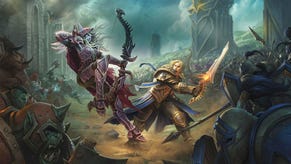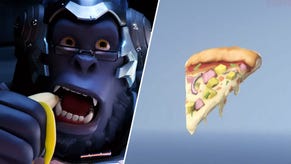Overwatch: talking hero design, Quake and backstory with Blizzard's Michael Chu
Pursuing the narrative threads that tie together Blizzard’s newest IP with the man in charge.
Overwatch: talking hero design, Quake and backstory with Blizzard's Michael Chu
Although primarily a first person shooter, albeit an unusual one at that, Overwatch is also a Blizzard game, meaning that complex characters and rich lore are integral to the experience. Senior game designer Michael Chu is the "story guy on Overwatch", with a history of design and writing across World of Warcraft and Diablo at Blizzard, plus his name on Hearthstone.
What we set out to find is how much involvement storytellers have on an objective based, strategical first-person-shooter. Also, considering that there’s no single-player campaign. Michael’s answers prove every bit as sunny and compelling as the Overwatch game itself.
Enjoy…
"The game designers talk about the idea of going back to the 90s-style shooter, so obviously that era is very inspirational to the team; games like Quake, Unreal Tournament and the early days of really great shooters."
VG247: First up, is there any story to tell about the Widowmaker Noire skin for Overwatch pre-orders, or is she just dressed to impress?
Michael Chu: The skins do a lot of different things. Some of them tie into the backstories of the characters, some of them are more like different ideas for what the character might be. This outfit is a slightly different conception of the character, there’s no big story behind it.
VG247: How many years ahead is the narrative for Overwatch currently planned out to be? How much is set in stone, and how much remains in flux?
Michael Chu: When we started working on Overwatch we took a different tack to what we’ve done in the past. One of the things we wanted to do was to leave ourselves some space to develop the universe. What’s interesting is, we might not have things as figured out as we have on other projects where we delve in quickly. We kind of want to leave ourselves space to develop these ideas as we go through.
One of the reasons this has been possible is because the game doesn’t have a traditional narrative; there’s no single-player campaign or anything like that. We have been hinting at the story, and developing it in some of these other mediums like the comics and the animated shorts. But that isn’t to say that we don’t have a plan for where we think everything is headed. We have big guideposts for where we’d like to take things and directions we’d like to develop the story, but we want to leave ourselves space so that we can learn more about the universe as we go and find connections between the characters.
VG247: Is part of the plan that a lot of this can be player guided, or community influenced? For example, certain characters might receive a lot of attention while others deserve more. Could this then influence the focus of the narrative?
Michael Chu: It’s been a different approach for me as a creator. What I’ve found is that, sometimes, the questions that the community raises or things that the community are interested in will raise questions for myself, and I’ll start to think about things. Ultimately, we have 21 characters in this game which is really a big amount and we have stories that we’d like to tell about all of them – some of them individually, some of them together. What we do is, we look at the medium that we are telling the story in, be it comics or animated movies, and then we try and find the best story that we’re most interested in telling.
It’s been really interesting as we’ve been going. We started at the BlizzCon announcement where we had 12 characters at the time and we’re up to 21 now. As we’ve been growing the universe we’ve started finding connections between characters, for example when we started with Symmetra we had a pretty good idea of where we wanted to go with her story, as an architect and a member of the Vishkar Corporation. But when we introduced the character of Lúcio – which is a character that you think wouldn’t have anything to do with Symmetra – we sort of started to see connections between the characters and realised that maybe there was a story between those two that we never intended initially.
VG247: There seems to be a real celebration of global culture with the heroes, there’s very positive ethnic representation. How much of this comes from within the development team, is it part of the plan or just something that has emerged over time?
Michael Chu: This was one of the things that was most exciting when we set out to build the Overwatch universe. We’ve done a lot of these fantastic universes in the past with Warcraft and Starcraft, and when we decided that we were going to turn our attention towards Earth, one of the things we were really excited about is to be able to tap into all the really interesting culture, history, different cities, different locations and really look to that for inspiration for Overwatch. We talked about wanting to do this ‘inspirational future’, this idea of a future we’d like to live in someday. I think there’s a really aspirational quality about it, one of the things we’ve tried to capture alongside with that is to have a game where the heroes come from all over the world, the maps are showcasing locations from all over the world. That’s definitely been something that we’ve been trying to do.
"What we wanted to do was create a world that was inviting and approachable for people with lots of different interests. We’re going for a game that we love, that’s the way that we approach all these projects."
VG247: Overwatch is reminiscent of Capcom’s Power Stone, which was extremely vibrant and featured a Street Fighter type roster of heroes in exotic locations. Also Team Fortress 2 in terms of having that colourful 1990s ‘funfair’ kind of feel.
Michael Chu: Some of the game designers talk about the idea of going back to the 90s-style shooter, so obviously that era is very inspirational to the team; games like Quake, Unreal Tournament and the early days of really great shooters. Also, yes, when you look at games like Street Fighter, we get inspiration from things like that. Like you mentioned, those were some of the early games that featured some of the diverse and interesting casts of heroes.
We take inspiration from all over the place, I mean other Blizzard games. One of the biggest games that you might not expect being an inspiration for the Overwatch team is actually Hearthstone. We are big fans of games, and we take inspiration from where we can find it.
VG247: What were the things that you used to read while growing up that made the biggest impact on you in terms of story-telling? Which things stay with you even now, that you’re really excited about, when creating a quest or designing a personality?
Michael Chu: Like many people that work at Blizzard, I’m a big pop culture fan. We love science fiction, fantasy… all these things have made a fabric that we look to when we’re creating things. For myself, I remember videogame influences particularly Japanese RPGs of the Super Nintendo generation were formative for me; games like Final Fantasy III/VI and Chrono Trigger. Yeah, there’s obviously a lot of good stuff that we look to.
VG247: When you joined the Overwatch team, what state was the game in at that time?
Michael Chu: I don’t know the exact date, because it’s been a while, but around the time that I joined the team was finishing off their early prototype. Which was to prove out the core concept of the game; a few heroes playing on a fairly simple map. It was pretty clear at that time that the game was fun, we were just about to move into the part of the project where we [chuckles] basically needed to create all the heroes and all the maps. At that time, we were trying to figure out the story of the game; who this first set of heroes were. This was about two-and-a-half, to three years ago.
VG247: In terms of the heroes that you had to work with specifically, can you remember how many there were, and who they were…?
Michael Chu: When I came on board Chris [Metzen, Creative Director] had some ideas, and the team had some ideas, about some character concepts and universe concepts. I think Chris had the general shape of the universe figured out. It was about nailing down the first 12 characters for the BlizzCon announce. I remember us talking about Tracer and Reaper, Phara and Torbjörn…
Actually Reaper is a very interesting character because when we first started working on him we had very general ideas: we wanted him to be mysterious, we wanted him to have some sort of interesting past that was tied into the overall story. Over the course of the next year or two we started to figure out who that character was and how he’d fit into things – kind of going back to what I said about the process we’ve been going with on this game.
VG247: There’s a great story about Reaper, and the excitement that surrounded the reveal of a particular skin pointing to his history…
Michael Chu: Blackwatch Reyes? Yeah! I remember sitting at BlizzCon when we revealed that skin, and I was really surprised by the reception of the crowd because I imagined that no one had really any idea… they’d be like ‘Oh, why is there this random guy who is a skin for Reaper!?’ But, actually, people had done enough digging. We tried to leave some hints about who the character was, but when they saw that it actually felt like a sort of reveal. It’s an Origins skin, so it’s supposed to tie back into his backstory as Gabriel Reyes, who was one of the original Overwatch team members.
VG247: When you’re establishing hero roots and plotting the course of their story, how do you structure this? Do you take cues from their build/load-out, that they’re a Tank, Offence or Support… what are the building blocks?
Michael Chu: The initial conception of a hero can come from anywhere, they come from all over the team. Sometimes it’s a very specific game design for a character, which can be anything from “hey, we need a character with a specific weapon” or we have this idea for a power that we think would be really interesting. Sometimes it just comes from the art – you know our really talented concept artists, like Arnold Tsang, will just draw something and we think “wow, that is so cool we have to think of an idea for that.”
Other times there’s more of a story impetus, but when we’re looking at digging into the backstories of these characters it comes from a lot of these different factors. Obviously a great starting point is “what are the abilities and what are the looks?”, so taking a character like Reinhardt for example: He’s got a big shield, and he’s got a big hammer. He’s a really big dude in armour and he’s got this whole knight thing, and we had the art for him. Okay ‘big, boisterous knight’ seems like something that would already play into what we’re seeing with the character and the gameplay. Something about Reinhardt that I think worked out really well is that we gave him this much larger than life personality, so that when you’re playing as him and he’s saying “get behind me!” you really feel like that’s matching your experience. In a lot of cases, that’s where we find the personalities.
As far as the backstories. We like to think of these characters like they could all be the hero of their own game. Imagining things that way kind of leads you… you want them to have their own little space inside the universe that they can participate in. That really helps to lead you down a path to find what those backstories are.
VG247: We’ve read that creating a hero in Overwatch is almost like treating them like they are their own Raid – plotting the player journey is almost like when you used to build a Raid or formulate a quest line for Diablo. Can you elaborate on that?
Michael Chu: We don’t have some of the traditional ways to tell stories, like a Quest Line where it’s a really obvious way that we can get out a story about a character or a location. Something like a Raid is really interesting because it’s not traditionally what you would think of in terms of a big story exploration. With Overwatch, what is interesting is that because we don’t have those traditional building blocks we have to do things in different ways.
Primarily in the game it’s through the dialogue, and the two ways that we tell these stories are through the character interactions – before the match you get this random banter between the characters, which is pretty simple, like one line back and forth. What we’re trying to do is shine a light into just a small sliver of either the character or a relationship that they have in the past with another character. And then the other thing that we have is that characters in combat sometimes have special lines that they say to each other. If you play Genji and Zenyatta together they’ll boost each other or help each other out. There are also some amusing kill lines between characters. That’s how we’re trying to explore them.
VG247: How are you using the narrative to encourage players to experience more than just the heroes that they’re most comfortable with?
"The process of going through the game, seeing the other characters, and maybe being frustrated by them or seeing something that you think is really cool, hopefully those things will interest you in trying out the other characters, learning more about them."
Michael Chu: A core pillar of the Overwatch game is that we want people to play as all the heroes. An obvious way is that, when you’re on the team creation screen, they’ll give you suggestions for characters that might be good for your team composition. This is sort of how I think people play is: you’ll jump in the game and stick with one character for a while, maybe the one that you’re most interested in, switch to another one then explore them… just the process of going through the game, seeing the other characters, and maybe being frustrated by them or seeing something that you think is really cool, hopefully those things will interest you in trying out the other characters, learning more about them. Also, like you said, things like dialogue, things that show off the personality of the characters, even stuff outside of the game. We hope that the animated shorts and the comics will provide insight to a character that you might otherwise not have any interest in playing. Maybe that’ll convince you to try them out and you’ll find a new favourite.
VG247: There are a lot of exotic weapons and gadgets in Overwatch. In a game like Diablo, you can go ahead and seek these out to own them. Although the various load-outs in Overwatch are set in stone to keep the gameplay fair and consistent, are there likely to be quest lines added for players to acquire a unique and cool new skin, for example?
Michael Chu: Right now we have the progression system with the Loot Boxes, and that’s our way of distributing customisation options. For now, that’s basically what we’re going with. You can purchase specific ones using credits, and duplicate items can be converted into credits. That way you can purchase the voice lines and so on that you particularly want.
VG247: How often will Overwatch be updated with new content: weekly, randomly or more specifically with the arrival of each major DLC drop?
Michael Chu: One of the things that’s awesome is that the level art and level design team do such a great job of putting all these little details into the game. We went through a pass where we updated the game with stuff that was appearing in the animated shorts. Looking at stuff like the signs in the diner in Route 66, they put so much interesting detail into bringing the world to life. As far as updating it, you know, we don’t have any specific plans for how we’re gonna update the maps, or if we’re gonna update the maps, but I’ve always wanted to update the news tickers on the Numbani map – I just think it would be fun if you could see the different headlines. We have an interest in doing that, but we don’t have a plan or anything specific to talk about when we might do that.
VG247: How wide, in terms of demographical reach, is the extended universe to expand? Thinking of Rescue Bots and Transformers, Star Wars Rebels or the worlds of Marvel and DC. Will story based media target younger players to ‘get them while they’re young’?
Michael Chu: I don’t know that we think of the Overwatch universe in that way. What we wanted to do was create a world that was inviting and approachable for people with lots of different interests. That’s basically what we’ve been going on. We’re going for a game that we love, that’s the way that we approach all these projects. All we really know are the things that we like, and we hope that if we do then maybe there will be a large audience out there for it.
VG247: That’s perfect. Thank you.
Overwatch by Blizzard Entertainment is available now for PC, PlayStation 4 and Xbox One. You can read our guide to all heroes and pick up invaluable tactics here.
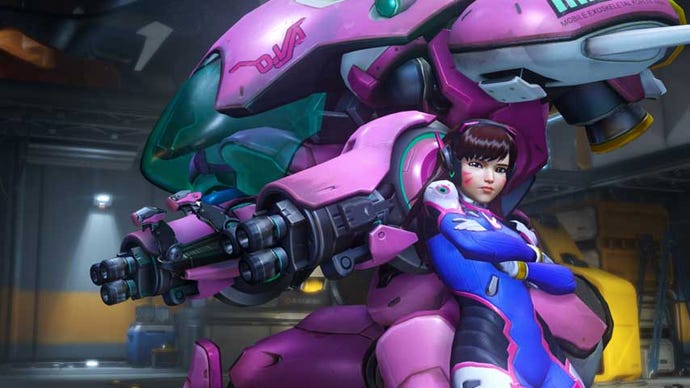






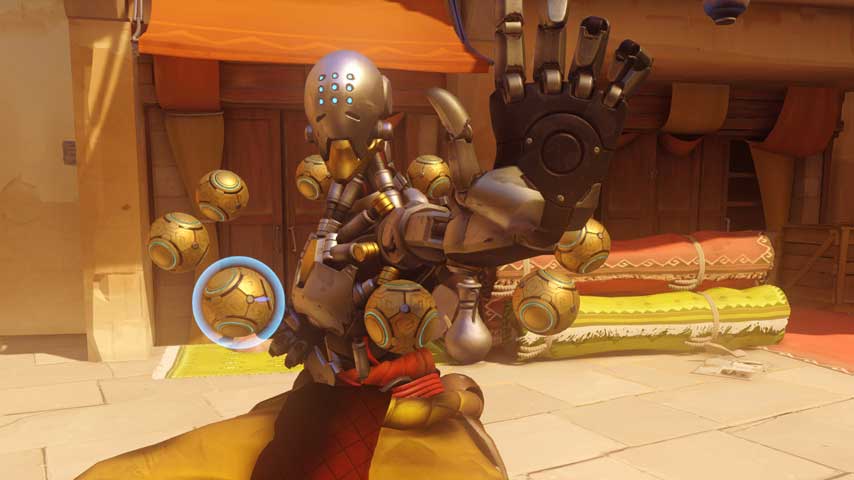

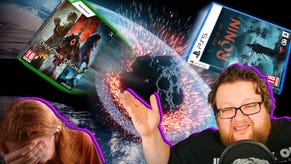
.jpg?width=291&height=164&fit=crop&quality=80&format=jpg&auto=webp)
